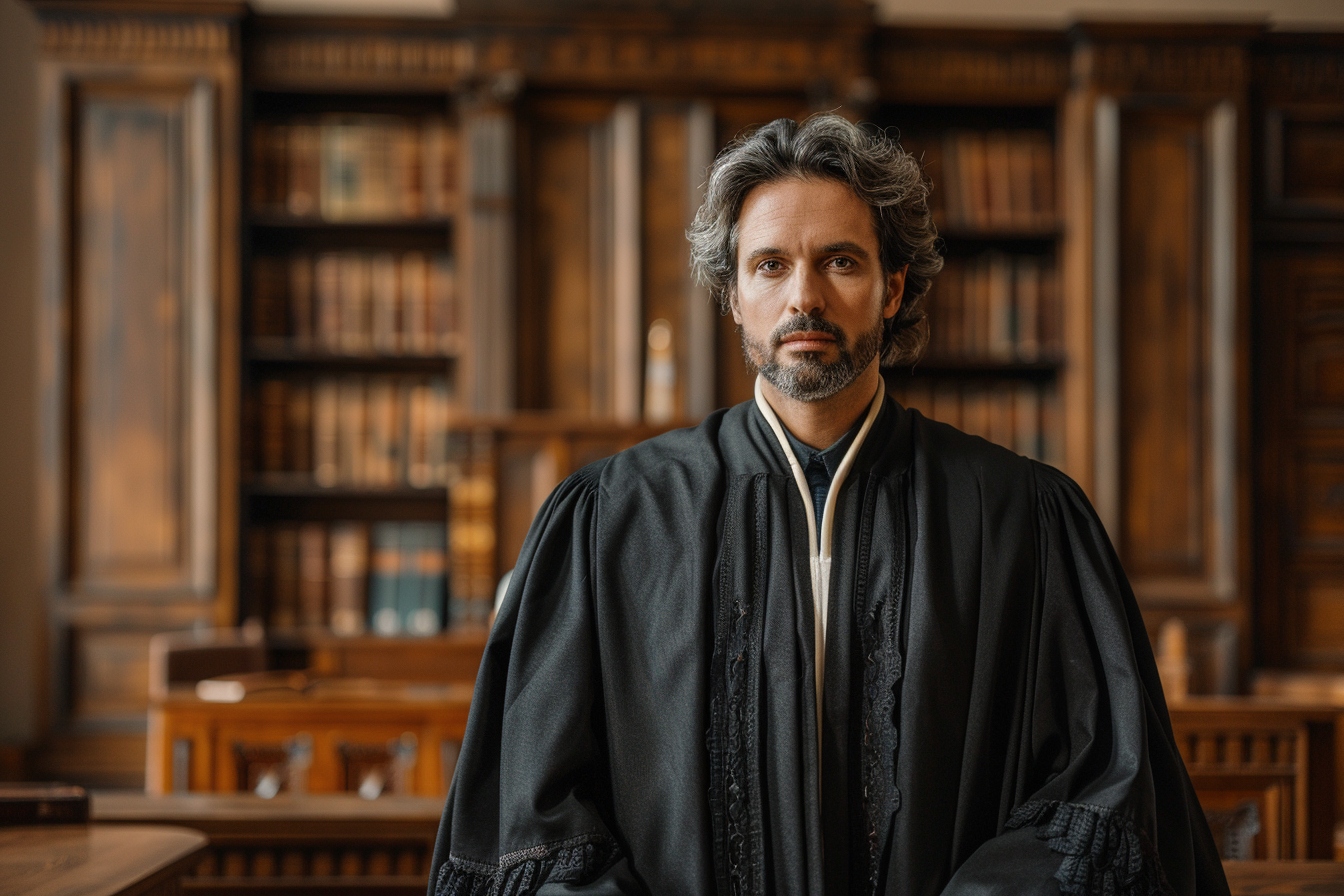Let’s start with a bit of history to understand the evolution of lawyers’ attire. The tradition of judicial dress dates back centuries and has its roots in medieval Europe. Initially, the dress was not specifically dedicated to legal professionals, but was a common outfit for all scholars and academics. The first dresses were loose and long clothes, often black or dark shades, symbolizing the dignity and seriousness of the functions exercised by these intellectuals.
The symbolism of the dress
Judicial dress, beyond its practical aspect, has an important symbolic dimension. She represents equality and impartiality of justice. When a lawyer puts on his robe, he transforms himself into a servant of the law, leaving aside his personal identity to speak only through the voice of the law. The black color of the dress evokes the rigor and solemnity of the profession, while distinctive elements such as the toga, the epitoge or the jabot mark the rank and experience of the wearer.
Anonymity imparted by the dress is also a key element. This standardized clothing helps erase socio-economic disparities between lawyers, thus creating a more equitable environment before the courts. All lawyers, regardless of their background, personal successes or means, appear in the same way before the court.
The evolution of the dress over time
The dress we know today is the result of a long evolution and the codification of outfits within different legal orders. The modifications have been numerous and often reflect social changes and judicial reforms. Despite everything, the conservation of its primary essence shows how tradition continues to shape contemporary justice.
The strict rituality observed in the wearing of the dress is a constant reminder that in justice, form follows substance. Appropriate attire is a sign of seriousness and respect towards the court, clients and the entire justice system.
Uniformity and distinction through dress
Uniformity sought by the dress is in reality nuanced by small details which testify to hierarchy and experience. Thus, certain accessories make it possible to identify the different functions within the judicial system: judges, lawyers at the Court of Cassation, trainee lawyers, etc.
Lawyers often wear an epitoge with three or two flaps depending on their seniority. Those at the Court of Cassation or the Council of State are distinguished by a dress decorated with ermine, marking their prestigious position.
Respect for judicial protocol

The correct wearing of the robe is governed by a strict protocol that lawyers learn from their early years of training. The terms of carriage sometimes vary depending on the courts and tribunals, but in general, the rules are clear and not subject to personal interpretation.
The dressing ritual, often accomplished in the silence of locker rooms or antechambers of courthouses, helps to psychologically prepare the lawyer for the rigor of his task. This moment of transition is essential in that it allows for concentration and reflection before confronting arguments and defending interests.
The perception of the dress by litigants
For litigants, the dress is a powerful symbol of justice and competence. It inspires respect and trust in the lawyer who represents them. Seeing your lawyer dressed with dignity can, for many, be a comfort and a source of hope.
Judicial pageantry can impress, but it also has a didactic function. He reminds us that the process we are witnessing is solemn and serious, and that the stakes can be considerable.
The importance of dress in a modern world
At a time when professions tend to abandon formal in favor of casual, some might question the attachment to such clothing traditions. But in the world of law, modernity often combines with history without denying it..
The dress, far from being a relic from another time, is a wardrobe that evolves with its times while retaining its deep meanings. Some legal orders are even considering models more suited to contemporary needs without transgressing their spirit.
Innovation while preserving tradition
Proposals for more ecological dresses, made from recycled or biodegradable fabrics, are emerging. They are a response to current concerns while preserving the symbolic heritage. Technical innovation also brings increased comfort thanks to more breathable and lighter materials which do not alter the presence imposed by tradition.
Sociological analysis of wearing a dress

The maintenance of the dress in the judicial sphere also raises sociological concerns. She embodies a marker of authority and professional distinction in a context where clothing distinctions tend to fade.
The oath taken by the lawyer, “I swear, as a lawyer, to exercise my functions with dignity, conscience, independence, probity and humanity”, finds its echo the first time the latter puts on his robe. This solemn commitment is not trivial and the dress is one of the most visible vectors.
The psychological impact of the dress on lawyers
The dress not only influences how others perceive the lawyer, but it also changes the mindset of the wearer. The presence and confidence provided by the dress are assets in the conduct of business, particularly during pleadings. The dress code contributes to the natural authority that emanates from the practicing lawyer.
Many legal professionals testify to an inner transformation when putting on the robe, a sort of transition from civil life to the life of the judicial order. It serves as moral and psychological armor, preparation for the role of defender of justice.
Challenges and criticisms of the dress tradition
Any tradition confronted with changing mentalities must respond to its criticisms. Some argue that the dress looks outdated and creates a barrier between lawyers and those they serve. These detractors would like to see lawyers adopt more “contemporary” attire.
However, those who uphold the tradition insist that the dress is much more than a piece of clothing. It is an embodiment of the central values of the profession, and calling it into question could shake some of the very foundations of the judicial institution.
Towards a reconciliation between tradition and modernity
The debate does not close on a clear-cut note, but evolves towards a possible reconciliation between contemporary expectations in terms of modernity and adherence to tradition. Many lawyers, young and old, are speaking out in favor of maintaining the dress, emphasizing that it is a vector of unity and permanence in a rapidly changing world.
The reflection on the wearing of the dress among lawyers is therefore far from being limited to an aesthetic or traditional consideration; it touches the very essence of the profession and its image in society. By defending the interests of their clients, lawyers also defend the values of a centuries-old institution which, through its respect for formalities, guarantees fair and respectful treatment to each litigant.
Thus, each time a lawyer puts on his robe, this gesture transcends simple appearance to be part of a process of perpetuating judicial ethics. The dress is much more than a tradition, it is the symbol of a profession whose mission is to watch over the delicate balance between law, justice and humanity.













